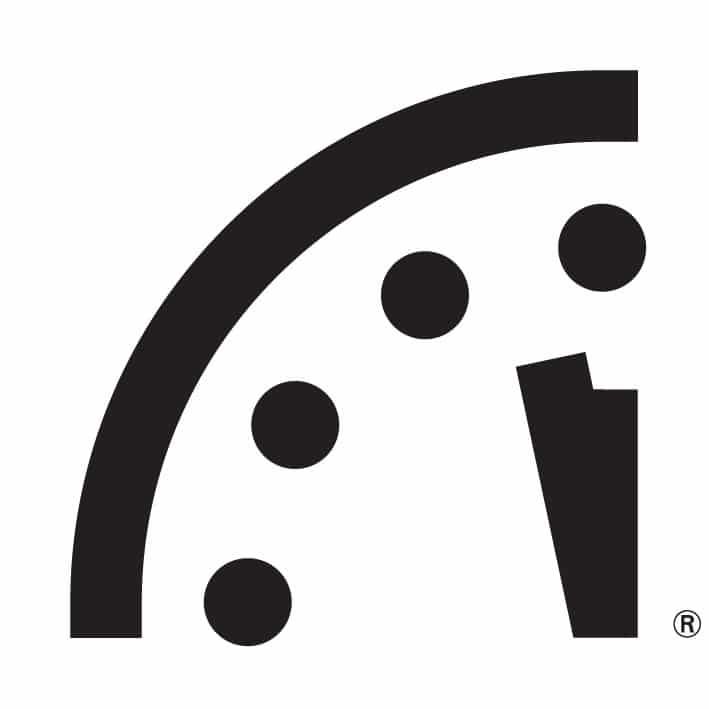Statement from the President and CEO
As the Bulletin’s Science and Security Board prepared for its first set of Doomsday Clock discussions this fall, it began referring to the current world security situation as a “new abnormal.” This new abnormal is a pernicious and dangerous departure from the time when the United States sought a leadership role in designing and supporting global agreements that advanced a safer and healthier planet. The new abnormal describes a moment in which fact is becoming indistinguishable from fiction, undermining our very abilities to develop and apply solutions to the big problems of our time. The new abnormal risks emboldening autocrats and lulling citizens around the world into a dangerous sense of anomie and political paralysis.
As you will see in the pages that follow, this year’s Doomsday Clock statement draws attention to the devolving state of nuclear and climate security. It also points to a qualitative change in information warfare and a steady misrepresentation of fact that is undermining confidence in political structures and scientific inquiry. At the same time, science is racing forward, and new global governance structures are desperately needed to manage rapidly evolving and potentially dangerous technologies.
In 2017, the Bulletin moved the time of the Doomsday Clock a half-minute closer to midnight, in part because of reckless approaches toward nuclear weapons and a growing disregard for the expertise needed to address today’s biggest challenges, most importantly climate change. We argued that world leaders not only failed to deal adequately with nuclear and climate threats, they increased them “through a variety of provocative statements and actions, including careless rhetoric about the use of nuclear weapons and the wanton defiance of scientific truths.” Two years later, it has become even clearer that “the intentional corruption of the information ecosystem” threatens to undermine the rational discourse needed to address such challenges. The 2019 statement therefore goes on to provide a framework for how citizens can begin to organize themselves and respond.
I am grateful to the Science and Security Board for cogently addressing the challenges we faceand developing a call for action. The Bulletin’s editor- in-chief John Mecklin helped blend differences in viewpoints and multiple voices into a unified statement—no easy feat. Our new executive chair, Jerry Brown, and Board of Sponsors chair Bill Perry not only offered their views but were invaluable in producing an animated and productive set of conversations ahead of this year’s Clock decision. I thank the Bulletin’s Governing Board for its support and guidance during the report process and throughout the year.
The Bulletin could not do all it does without major supporters, including the Harris School of Public Policy at the University of Chicago, the MacArthur Foundation, the Carnegie Corporation of New York, the Holthues Trust, the Ploughshares Fund, the Sisyphus Supporting Foundation, and the many other foundations and major donors who help the Bulletin ensure that advances in science and technology make life on Earth better, not worse. Most gratifying is the support offered by individuals around the world, often in small but steady amounts.Their support suggests that the ingredients exist to create a global grassroots coalition committed to advancing a more peaceful future, one based on scientific inquiry, rational debate, and fewer nuclear weapons.
Everyone has a role to play in advancing this vision, and there is much work to be done. We hope you will join us and, in so doing, help #rewindthedoomsdayclock.
Rachel Bronson, PhD
President & CEO
January 24, 2019
Chicago, IL
A new abnormal: It is still two minutes to midnight
Editor’s note: Founded in 1945 by University of Chicago scientists who had helped develop the first atomic weapons in the Manhattan Project, the Bulletin of the Atomic Scientists created the Doomsday Clock two years later, using the imagery of apocalypse (midnight) and the contemporary idiom of nuclear explosion (countdown to zero) to convey threats to humanity and the planet. The decision to move (or to leave in place) the minute hand of the Doomsday Clock is made every year by the Bulletin’s Science and Security Board in consultation with its Board of Sponsors, which includes 15 Nobel laureates. The Clock has become a universally recognized indicator of the world’s vulnerability to catastrophe from nuclear weapons, climate change, and new technologies emerging in other domains.
To: Leaders and citizens of the world
Re: A new abnormal: It is still two minutes to midnight
Date: January 24, 2019
Humanity now faces two simultaneous existential threats, either of which would be cause for extreme concern and immediate attention. These major threats—nuclear weapons and climate change—were exacerbated this past year by the increased use of information warfare to undermine democracy around the world, amplifying risk from these and other threats and putting the future of civilization in extraordinary danger.
In the nuclear realm, the United States abandoned the Iran nuclear deal and announced it would withdraw from the Intermediate-range Nuclear Forces Treaty (INF), grave steps towards a complete dismantlement of the global arms control process. Although the United States and North Korea moved away from the bellicose rhetoric of 2017, the urgent North Korean nuclear dilemma remains unresolved. Meanwhile, the world’s nuclear nations proceeded with programs of “nuclear modernization” that are all but indistinguishable from a worldwide arms race, and the military doctrines of Russia and the United States have increasingly eroded the long-held taboo against the use of nuclear weapons.
On the climate change front, global carbon dioxide emissions—which seemed to plateau earlier this decade—resumed an upward climb in 2017 and 2018. To halt the worst effects of climate change, the countries of the world must cut net worldwide carbon dioxide emissions to zero by well before the end of the century. By such a measure, the world community failed dismally last year. At the same time, the main global accord on addressing climate change—the 2015 Paris agreement—has become increasingly beleaguered.The United States announced it will withdraw from that pact, and at the December climate summit in Poland, the United States allied itself with Russia, Saudi Arabia, and Kuwait (all major petroleum-producing countries) to undercut an expert report on climate change impacts that the Paris climate conference had itself commissioned.
Amid these unfortunate nuclear and climate developments, there was a rise during the last year in the intentional corruption of the information ecosystem on which modern civilization depends. In many forums, including particularly social media, nationalist leaders and their surrogates lied shamelessly, insisting that their lies were truth, and the truth “fake news.” These intentional attempts to distort reality exaggerate social divisions, undermine trust in science, and diminish confidence in elections and democratic institutions. Because these distortions attack the rational discourse required for solving the complex problems facing humanity, cyber-enabled information warfare aggravates other major global dangers—including those posed by nuclear weapons and climate change—as it undermines civilization generally.
There is nothing normal about the complex and frightening reality just described.
The Bulletin of the Atomic Scientists Science and Security Board today sets the Doomsday Clock at two minutes to midnight—the closest it has ever been to apocalypse. Though unchanged from 2018, this setting should be taken not as a sign of stability but as a stark warning to leaders and citizens around the world. The current international security situation—what we call the “new abnormal”—has extended over two years now. It’s a state as worrisome as the most dangerous times of the Cold War, a state that features an unpredictable and shifting landscape of simmering disputes that multiply the chances for major military conflict to erupt.
This new abnormal is simply too volatile and dangerous to accept as a continuing state of world affairs.
Dire as the present may seem, there is nothing hopeless or predestined about the future. The Bulletin resolutely believes that human beings can manage the dangers posed by the technology that humans create. Indeed, in the 1990s, leaders in the United States and the Soviet Union took bold action that made nuclear war markedly less likely—and that led the Bulletin to move the minute hand of the Doomsday Clock far from midnight.
But threats must be acknowledged before they can be effectively confronted. The current situation—in which intersecting nuclear, climate, and information warfare threats all go insufficiently recognized and addressed, when they are not simply ignored or denied—is unsustainable. The longer world leaders and citizens carelessly inhabit this new and abnormal reality, the more likely the world is to experience catastrophe of historic proportions.
Worrisome nuclear trends continue. The global nuclear order has been deteriorating for many years, and 2018 was no exception to this trend. Relations between the United States and both Russia and China have grown more fraught. The architecture of nuclear arms control built up over half a century continues to decay, while the process of negotiating reductions in nuclear weapons and fissile material stockpiles is moribund. The nuclear-armed states remain committed to their arsenals, are determined to modernize their capabilities, and have increasingly espoused doctrines that envision nuclear use. Brash leaders, intense diplomatic disputes, and regional instabilities combine to create an international context in which nuclear dangers are all too real.
A number of negative developments colored the nuclear story in 2018.
First, the United States abandoned the Joint Comprehensive Plan of Action, the multilateral agreement that imposed unprecedented constraints on Iran’s nuclear program and allowed unprecedented verification of Iran’s nuclear facilities and activities. On May 8, President Trump announced that the United States would cease to observe the agreement and would instead launch a campaign of “maximum pressure” against Iran. So far, Iran and the other parties have continued to comply with the agreement, despite the absence of US participation. It is unclear whether they will keep the agreement alive, but one thing is certain: The Trump administration has launched an assault on one of the major nuclear nonproliferation successes of recent years and done so in a way that increases the likelihood of conflict with Iran and further heightens tensions with long-term allies.
Second, in October the Trump administration announced that it intends to withdraw from the INF Treaty, which bans missiles of intermediate range. Though bedeviled by reciprocal complaints about compliance, the INF agreement has been in force for more than 30 years and has contributed to stability in Europe. Its potential death foreshadows a new competition to deploy weapons long banned. Unfortunately, while treaties are being eliminated, there is no process in place that will create a new regime of negotiated constraints on nuclear behavior. For the first time since the 1980s, it appears the world is headed into an unregulated nuclear environment—an outcome that could reproduce the intense arms racing that was the hallmark of the early, unregulated decades of the nuclear age.
Third, the longstanding, urgent North Korean nuclear issue remains unresolved. Some good news did emerge in 2018. The bellicose rhetoric of 2017, which had raised fears of war, is largely gone. The summit between President Trump and President Kim in Singapore in June 2018 appears to have been a diplomatic step forward. But not a single substantive and enduring concrete step was taken to constrain or roll back North Korea’s nuclear program, and modernization of its nuclear capabilities continues. The chummy exchanges between the two leaders have reverted to wary challenges, and the potential for nuclear instability in Northeast Asia persists, largely unabated.
Fourth, even as arms control efforts wane, modernization of nuclear forces around the world continues apace. In his Presidential Address to the Federal Assembly on March 1, Russian President Vladimir Putin described an extensive nuclear modernization program, justified as a response to US missile defense efforts. The Trump administration has added to the enormously expensive comprehensive nuclear modernization program it inherited from the Obama administration. Meanwhile, the nuclear capabilities of the other seven nuclear armed states are not governed by any negotiated constraints, and several of them—notably India and Pakistan—continue to expand and modernize their capabilities. These long-term modernization programs envision the possession of substantial nuclear capabilities for decades to come, with little indication of interest in reducing or constraining nuclear forces.
Fifth, reliance on nuclear weapons appears to be growing, and military doctrines are evolving in ways that increase the focus on actually using nuclear weapons. The Trump administration’s most recent Nuclear Posture Review is doubly worrisome from this point of view. It spotlights the claim that Russia has adopted a highly escalatory nuclear doctrine. And it insists that the United States too must be prepared to use nuclear weapons in a wide array of circumstances, and so should invest in new, more-usable nuclear weapons. The longstanding hopes that nuclear weapons would recede into the background of international politics are being dashed.
The disturbing developments in 2018 are the latest indications that the nuclear order is deteriorating and that nuclear risks are increasing. Urgent action is necessary to reverse the trends that are taking the world down a perilous nuclear path.
Ominous climate change trends. The existential threat from human-caused global warming is ominous and getting worse. Every year that human activities continue to add carbon dioxide to the atmosphere irreversibly ratchets up the future level of human suffering and ecosystem destruction that will be wrought by global climate disruption. The key measure of improvement on the climate front is the extent of progress toward bringing global net carbon dioxide emissions to zero. On this measure, the countries of the world have failed dismally.
Global carbon dioxide emissions rates had been rising exponentially until 2012 but ceased growing from 2013 to 2016. Even if this emissions plateau had continued, it would not have halted the growth of warming. Net emissions need to ultimately be brought to zero to do so, given the persistence of carbon dioxide in the atmosphere for up to thousands of years. The ominous news from 2017 and 2018 is that world emissions appear to have resumed their upward climb.
Even nations that have strongly supported the need to decarbonize are not doing enough. Preliminary estimates show that almost all countries contributed to the rise in emissions. Some countries, including the United States and some members of the EU, increased their emissions after years of making progress in reducing them.
The United States has also abandoned its responsibilities to lead the world decarbonization effort. The United States has more resources than poorer nations have; its failure to ambitiously reduce emissions represents an act of gross negligence. The United States stood alone while the other G20 countries signed on to a portion of a joint statement reaffirming their commitment to tackle climate change. Then in 2018, at the United Nations Climate Change Conference in Poland, the United States joined with Russia, Saudi Arabia, and Kuwait—all major oil producers—to undercut a report on the impacts of climate change.
Although emissions estimates for 2018 are preliminary, what is known supports a continuation of an ominous trend. That the world is losing ground in its efforts to achieve net zero emissions is set against a backdrop of increasing scientific evidence for the severity of impacts of warming of Earth. Despite the waning of El Niño early in the year, 2018 is likely to be the fourth warmest year on record as measured by global mean temperature, with previous record highs in 2015, 2016, and 2017. Greenland ice is melting at an unprecedented rate.
Global warming has contributed to the occurrence of catastrophes, including the massive wildfires seen this year in California, Greece, and Sweden, and the deadly heat waves suffered by Asia, Australia, Europe, and North America. The US National Climate Assessment has forecast increasingly severe impacts on the economy, human health, agriculture, and natural ecosystems. An Intergovernmental Panel on Climate Change report has shown that even a modest increase in global mean warming—from 1.5 degrees Celsius to 2 degrees—will bring severe impacts. Yet if the world were on track to fulfill its commitments under the Paris climate accords, which it clearly is not, that would be insufficient to halt warming at 2 degrees.
As long as there is carbon left in the ground, efforts to keep it there will reduce the toll of future suffering from climate change. But even amid the worsening manifestations of an increasingly disrupted climate, denialists continue to stymie action. President Trump, dismissing the National Climate Assessment prepared by his own agencies, declared stubbornly, “I don’t believe it.”
There is still time to rescue the world from truly catastrophic effects of climate change. For such a rescue to become reality, however, progress toward decarbonization must pick up pace dramatically, and very soon.
The threat of information warfare and other disruptive technologies. Nuclear war and climate change threaten the physical infrastructure that provides the food, energy, and other necessities required for human life. But to thrive, prosper, and advance, people also need reliable information about their world—factual information, in abundance.
Today, however, chaos reigns in much of the information ecosystem on which modern civilization depends. In many forums for political and societal discourse, we now see national leaders shouting about fake news, by which they mean information they do not like. These same leaders lie shamelessly, calling their lies truth. Acting across national boundaries, these leaders and their surrogates exacerbate existing divisions, creating rage and increasing distrust in public and private institutions. Using unsupported anecdotes and sketchy rhetoric, denialists raise fear and doubt regarding well-established science about climate change and other urgent issues. Established institutions of the government, journalism, and education—institutions that have traditionally provided stability—are under attack precisely because they have provided stability.
In this environment, communication inflames passions rather than informing reason.
Many countries have long employed propaganda and lies—otherwise known as information warfare—to advance their interests. But a quantitative change of sufficient magnitude qualifies as a qualitative change. In the Internet age, the volume and velocity of information has increased by orders of magnitude. Modern information technology and social media allow users easy connectivity and high degrees of anonymity across national borders. This widespread, inexpensive access to worldwide audiences has allowed practitioners of information warfare to broadcast false and manipulative messages to large populations at low cost, and at the same time to tailor political messages to narrow interest groups.
By manipulating the natural cognitive predispositions of human beings, information warriors can exacerbate prejudices, biases, and ideological differences. They can invoke “alternative facts” to advance political positions based on outright falsehoods. Rather than a cyber Armageddon that causes financial meltdown or nationwide electrical blackouts, this is the more insidious use of cyber tools to target and exploit human insecurities and vulnerabilities, eroding the trust and cohesion on which civilized societies rely.
The Enlightenment sought to establish reason as the foundational pillar of civilized discourse. In this conception, logical argument matters, and the truth of a statement is tested by examination of values, assumptions, and facts, not by how many people believe it. Cyber-enabled information warfare threatens to replace these pillars of logic and truth with fantasy and rage. If unchecked, such distortion will undermine the world’s ability to acknowledge and address the urgent threats posed by nuclear weapons and climate change and will increase the potential for an end to civilization as we know it. The international community should begin multilateral discussions that aim to discourage cyber-enabled information warfare and to buttress institutions dedicated to rational, fact- based discourse and governance.
The world faces other major threats from disruptive technologies; developments in synthetic biology, artificial intelligence, and cyber sabotage are of particular concern. The velocity of change across these and other technological fronts is extremely high; the international effort to manage these rapid advances has been, to date, grossly insufficient.
A signal event of 2018 was the editing of a human genome in China, an unfortunate demonstration of the weakness of institutional constraints on genetic engineering and other biotechnological research. The advent of “designer” human beings would constitute a truly history-changing event with a significant potential for unforeseen, large, and dangerous consequences. The international community has a common interest in delaying experimentation into the editing of human genomes until such research can receive the highest level of scientific and ethical review. At the same time, other biological hazards—ranging from biological terrorist attacks to the emergence of deadly, rapidly spreading diseases—continue to threaten world security. The management of synthetic biology and other biothreats must become a world priority.
Advances in machine intelligence—often called artificial intelligence or AI—are also progressing at a rapid and largely unmanaged pace. The Science and Security Board is particularly concerned about the incorporation of AI into autonomous weaponry that makes“kill” decisions without human supervision. But AI research and development cut across a wide array of human activities. Because AI will have increasingly large military, economic, and social effects in coming decades, the international community must develop a cooperative system that maximizes the positive potential of advances in machine cognition while diminishing potential downsides.
Beyond the information warfare previously described, the sabotage of computing networks via cyber hacking constitutes a multifaceted threat to global security. The sophisticated sabotage of the “Internet of Things”—computer networks that control major financial and power infrastructure and have access to more than 20 billion personal devices—could have impacts so severe as to inspire military responses, potentially involving nuclear weapons. Here, too, more effective international management regimes are desperately needed.
Toward a safer, more sustainable world. The Doomsday Clock was first set at two minutes to midnight in 1953, after the Soviet Union exploded a thermonuclear device within a year of the first US hydrogen bomb test. In ensuing decades, the two nations engaged in a furious arms race that culminated in the 1980s, when the world inventory of nuclear warheads topped 60,000.
From that point until fairly recently, the leaders of the United States and the Soviet Union (and Russia, after the dissolution of the Soviet Union) crafted a series of arms control agreements that drastically reduced the number of nuclear weapons deployed. These agreements were based not merely on trust, but also on verification and consultation, and as they were expanded over time, the threat of a global nuclear holocaust seemed to fade into the background, a concern of the past, dealt with long ago.
The belief that the threat of nuclear war has been vanquished was and is a mirage.
The continuing danger posed by nuclear weapons burst into world news headlines in 2017, as Donald Trump and Kim Jong-un exchanged bombastic threats of nuclear attack and the US-Russia nuclear rivalry re-emerged. In January 2018, the Science and Security Board moved the hands of the Clock to two minutes before midnight. At that time, the board asked that its judgement “be interpreted exactly as it is meant—as an urgent warning of global danger.” By keeping the Clock at two minutes—the closest it has ever been to apocalypse—the Science and Security Board today highlights an unacceptable reality that remains largely unrecognized by the public at large: The future of the world is now in extreme danger from multiple intersecting and potentially existential threats.
This situation—what we call “the new abnormal”—is untenable. In this extraordinarily dangerous state of affairs, nuclear war and climate change pose severe threats to humanity, yet go largely unaddressed. Meanwhile, the use of cyber-enabled information warfare by countries, leaders and subnational groups of many stripes around the world exacerbates these enormous threats and endangers the information ecosystem that underpins democracy and civilization as we know it. At the same time, other disruptive technologies complicate and further darken the world security situation.
This situation cannot—must not—continue. And it need not.
As the Science and Security Board noted last year: “The means for managing dangerous technology and reducing global-scale risk exist; indeed, many of them are well-known and within society’s reach, if leaders pay reasonable attention to preserving the long-term prospects of humanity, and if citizens demand that they do so.”
US President Trump and North Korean Chairman Kim made progress in cooling tensions on the Korea Peninsula in the last year, toning down their provocative rhetoric, reducing behavior that could lead to conflict, and opening talks on Pyongyang’s nuclear program. The Science and Security Board applauds these efforts but notes that little real progress on dismantling the North Korean nuclear program has been made. We urge the United States and North Korea to move forward with the difficult negotiations that will be necessary to reach agreement on concrete steps toward a denuclearization process that will benefit the North and the rest of the world.
Beyond the Korean situation, there are many practical, concrete steps that leaders could take—and citizens should demand—to improve the current, abnormal, and absolutely unacceptable state of world security affairs.
These common-sense actions would make the world safer:
- US and Russian leaders should return to the negotiating table to resolve differences over the INF treaty; to extend the nuclear arsenal limits of New START beyond 2021 and to seek further reductions in nuclear arms; to discuss a lowering of the alert status of the nuclear arsenals of both countries; to limit nuclear modernization programs that threaten to create a new nuclear arms race; and to start talks aiming toward elimination of battlefield nuclear weapons.
- The United States and Russia should discuss and adopt measures to prevent peacetime military incidents along the borders of NATO. Provocative military exercises and maneuvers hold the potential for crisis escalation. Both militaries must exercise restraint and professionalism, adhering to all norms developed to avoid conflict and accidental encounters.
- US citizens should demand climate action from their government. Climate change is a serious and worsening threat to humanity. Citizens should insist that their governments acknowledge it and act accordingly. President Trump’s decision to withdraw the United States from the Paris climate change agreement was a dire mistake. The Trump administration should revisit that decision, which runs counter to credible science.
- The temperature goal of the Paris climate agreement—to keep warming below 2 degrees Celsius and, ideally, below 1.5 degrees—is consistent with consensus views on climate science, eminently achievable, and economically viable, if poor countries are given the support they need. But countries have to act promptly and redouble their efforts to reduce greenhouse gas emissions well beyond their initial inadequate pledges to the Paris agreement.
- The Trump administration should revisit its lamentable decision to exit the Joint Comprehensive Plan of Action for limiting Iran’s nuclear program. The Iran agreement is not perfect, but it serves the interest of the international community in restraining the spread of nuclear weapons.
- The international community should begin multilateral discussions aimed at establishing norms of behavior, both domestic and international, that discourage and penalize the misuse of information technology to undermine public trust in political institutions, in the media, in science, and in the existence of objective reality itself. Cyber-enabled information warfare is a threat to the common good. Deception campaigns—and leaders intent on blurring the line between fact and politically motivated fantasy—are a profound threat to effective democracies, reducing their ability to address nuclear weapons, climate change, and other existential dangers.
The “new abnormal” that we describe, and that the world now inhabits, is unsustainable and extremely dangerous. The world security situation can be improved, if leaders seek change and citizens demand it. It is two minutes to midnight, but there is no reason the Doomsday Clock cannot move away from catastrophe. It has done so in the past, because wise leaders acted—under pressure from informed and engaged citizens around the world.
Today, citizens in every country can use the power of the Internet to fight against social media disinformation and improve the long-term prospects of their children and grandchildren. They can insist on facts, and discount nonsense. They can demand action to reduce the existential threat of nuclear war and unchecked climate change.
Given the inaction of their leaders to date, citizens of the world should make a loud and clear demand: #RewindTheDoomsdayClock.
Science and Security Board biographies
Rachel Bronson (ex officio SASB) is the President and CEO of the Bulletin of the Atomic Scientists, where she oversees the publishing programs, the management of the Doomsday Clock, and activities around nuclear risk, climate change, and disruptive technologies. Before joining the Bulletin, she served as vice president for studies at The Chicago Council on Global Affairs, adjunct professor of Global Energy at the Kellogg School of Management, and senior fellow and director of Middle East studies at the Council on Foreign Relations, among other positions. Her book, Thicker than Oil: America’s Uneasy Partnership with Saudi Arabia (Oxford University Press, 2006), has been translated into Japanese and published in paperback. Her writings and commentary have appeared in outlets including Foreign Affairs, Foreign Policy, The New York Times, The Washington Post, “PBS News Hour,” and “The Daily Show.” Bronson has served as a consultant to NBC News and testified before the congressional Task Force on Anti-Terrorism and Proliferation Financing, Congress’s Joint Economic Committee, and the 9/11 Commission.
Edmund G. Brown Jr. (Executive Chair) is the Executive Chair of the Bulletin of the Atomic Scientists’ Boards and he just completed his fourth term as Governor of the State of California in 2019. He began his career in public service in 1969 as a trustee for the LA Community College District and became California Secretary of State in 1970 and Governor of California in 1974 and 1978. After his governorship, Brown lectured and traveled widely, practiced law, served as chairman of the state Democratic Party, and ran for president. Brown was elected Mayor of Oakland in 1988 and California Attorney General in 2006; he was elected to a third gubernatorial term in 2010 and a fourth term in 2014. During this time, Brown helped eliminate the state’s multi-billion dollar budget deficit, spearheaded successful campaigns to provide new funding for California’s schools, and
established a robust Rainy Day Fund to prepare for the next economic downturn. His administration established nation-leading targets to protect the environment and fight climate change. Brown attended the University of California, Berkeley, and earned a JD at Yale Law School.
Lynn Eden is Senior Research Scholar (Emeritus) at Stanford University’s Center for International Security and Cooperation. Eden is also co-chair of US Pugwash and a member of the International Pugwash Council. Her scholarly work focuses on the military and society; science, technology, and organizations; and US nuclear weapons history and policy. Eden’s Whole World on Fire: Organizations, Knowledge, and Nuclear Weapons Devastation won the American Sociological Association’s 2004 Robert K. Merton Award for best book in science and technology studies. Her current research and writing (mostly historical) asks how a specific US military planning organization has enabled very good people to plan what, if put into action, could or would result in the deaths of tens or hundreds of millions of people. In other words, how do US military officers make plans to fight and prevail in nuclear war?
Rod Ewing is the Frank Stanton Professor in Nuclear Security in the Center for International Security and Cooperation in the Freeman Spogli Institute for International Studies and a professor in the department of geological sciences in the School of Earth, Energy and Environmental Sciences at Stanford University. Ewing’s research focuses on the back end of the nuclear fuel cycle, mainly nuclear materials and the geochemistry of radionuclides. He is the past president of the International Union of Materials Research Societies. Ewing has written extensively on issues related to nuclear waste management and is co-editor of Radioactive Waste Forms for the Future and Uncertainty Underground: Yucca Mountain and the Nation’s High-Level Nuclear Waste. He received the Lomonosov Medal of the Russian Academy of Sciences in 2006.
Biographies (continued)
Steve Fetter is associate provost, dean of the graduate school, and professor of public policy at the University of Maryland. He served for five years in the White House Office of Science and Technology Policy during the Obama Administration, where he led the environment and energy and the national security and international affairs divisions. He is a fellow of the American Physical Society and a member of the Union of Concerned Scientists board of directors and the National Academy of Sciences Committee on International Security and Arms Control. He has worked on nuclear policy issues in the Pentagon and the State Department and has been a visiting fellow at Stanford, Harvard, MIT, and Lawrence Livermore National Laboratory. He also served as associate director of the Joint Global Change Research Institute and vice chairman of the Federation of American Scientists. He is a recipient of the American Physical Society’s Joseph A. Burton Forum Award, the Federation of American Scientists’ Hans Bethe ‘Science in the Public Service’ award, and the Secretary of Defense Medal for Outstanding Public Service.
Daniel Holz is a professor at the University of Chicago in the departments of physics, astronomy & astrophysics, the Enrico Fermi Institute, and the Kavli Institute for Cosmological Physics. His research focuses on general relativity in the context of astrophysics and cosmology. He is a member of the Laser Interferometer Gravitational- Wave Observatory (LIGO) collaboration, and was part of the team that announced the first detection of gravitational waves in early 2016 and the first multi-messenger detection of a binary neutron star in 2017. He received a 2012 National Science Foundation CAREER Award, the 2015 Quantrell Award for Excellence in Undergraduate Teaching, and the Breakthrough Prize in Fundamental Physics in 2016. Holz was selected as a Kavli Fellow of the National Academy of Sciences and is a Fellow of the American Physical Society. He received his PhD in physics from the University ofChicago and his AB in physics from Princeton University.
Sivan Kartha is a Senior Scientist at the Stockholm Environmental Institute whose research and publications for the past 25 years have focused on technological options and policy strategies for addressing climate change, concentrating most recently on equity and efficiency in the design of an international climate regime. He is a co-Leader of SEI’s Gender and Social Equity Programme, and co-Director of the Climate Equity Reference Project. His current work deals primarily with the economic, political, and ethical dimensions of equitably sharing the effort of an ambitious global response to climate change. Kartha has also worked on mitigation scenarios, market mechanisms for climate actions, and the environmental and socioeconomic impacts of biomass energy. His work has enabled him to advise and collaborate with diverse organizations, including the UN Climate Convention Secretariat, various United Nations and World Bank programs, numerous government policy-making bodies and agencies, foundations, and civil society organizations throughout the developing and industrialized world. He served as a Coordinating Lead Author in the preparation of the Fifth Assessment Report of the Intergovernmental Panel on Climate Change, released in 2014, co- leading the chapter on Equity and Sustainable Development, and has been selected as a Lead Author for the upcoming IPCC Sixth Assessment Report.
Elizabeth Kolbert has been a staff writer at The New Yorker since 1999 and has written extensively on science and climate change to great acclaim. Her most recent book, The Sixth Extinction, won the 2015 Pulitzer Prize for general nonfiction. Kolbert is also known for her book Field Notes From a Catastrophe, based on her three-part series on global warming, “The Climate of Man,” which won the 2006 National Magazine Award for Public Interest and the AAAS Advancement of Science Journalism Award. She is also a recipient of a Heinz Award (for educating the public about environmental issues) and a Guggenheim Fellowship.
Biographies (continued)
Herb Lin is senior research scholar for cyber policy and security at the Center for International Security and Cooperation and Hank J. Holland Fellow in Cyber Policy and Security at the Hoover Institution, both at Stanford University. His research interests relate broadly to policy-related dimensions of cybersecurity and cyberspace, and he is particularly knowledgeable about the use of offensive operations in cyberspace as instruments of national policy and the security dimensions of information warfare and influence operations on national security. In 2016, he served on President Obama’s Commission on Enhancing National Cybersecurity. He has also served as professional staff member and staff scientist for the House Armed Services Committee (1986-1990), where his portfolio included defense policy and arms control issues.
Suzet McKinney is the CEO/Executive Director of the Illinois Medical District Commission. She is the former Deputy Commissioner of the Bureau of Public Health Preparedness and Emergency Response at the Chicago Department of Public Health, where she oversaw the emergency preparedness efforts for the department and coordinated those efforts within the larger spectrum of Chicago’s public safety activities. A sought-after expert in her field, McKinney provided support to the US Department of Homeland Security, the US Defense Department, Defense Threat Reduction Agency, to provide subject matter expertise in biological terrorism preparedness to international agencies. She is the author of the new text: Public Health Emergency Preparedness: Practical Solutions for the Real World, published by Jones & Bartlett Publishers (2018).
Steve Miller is Director of the International Security Program at the Belfer Center for Science and International Affairs in Harvard University’s Kennedy School of Government. He is a Fellow of the American Academy of Arts and Sciences, where he is a member of the Committee on International Security Studies (CISS). Miller is
also Co-Chair of the US Pugwash Committee, and is a member of the Council of International Pugwash. Miller co-directed the Academy’s project on the Global Nuclear Future Initiative with the Bulletin’s Science and Security Board chair, Robert Rosner.
William J. Perry (Chair - Board of Sponsors, ex officio SASB) is the chair of the Bulletin’s Board of Sponsors and his career has spanned academia, industry, entrepreneurship, government, and diplomacy. He served as the 19th Secretary of Defense for the US. In 2007, Perry, George Shultz, Sam Nunn, and Henry Kissinger together formed the Nuclear Security Project, articulating practical steps to reduce current nuclear dangers. In 2013, he founded the William J. Perry Project in order to engage and educate the public on these issues, and in 2015 published My Journey at the Nuclear Brink, a personal account of his lifelong effort to reduce the threat of a nuclear catastrophe. Perry is currently the Michael and Barbara Berberian Professor (emeritus) at Stanford University. He received a BS and MS from Stanford, and a PhD from Pennsylvania State. He was awarded the Presidential Medal of Freedom (1997) and the Knight Commander of the British Empire (1998). Perry has received numerous other awards, including the American Electronic Association’s Medal of Achievement (1980), the Eisenhower Award (1996), and the Marshall Award (1997).
Raymond Pierrehumbert is Halley Professor of Physics at the University of Oxford. He was a lead author on the IPCC Third Assessment Report, and a co-author of the National Research Council report on abrupt climate change. He was awarded a John Simon Guggenheim Fellowship in 1996, which was used to launch collaborative work on the climate of Early Mars with collaborators in Paris. He is a Fellow of the American Geophysical Union (AGU), a Fellow of the American Academy of Arts and Sciences, and has been named Chevalier de l’Ordre des Palmes Académiques by the Republic of France. Pierrehumbert’s central research interest is the use
Biographies (continued)
of fundamental physical principles to elucidate the behavior of the present and past climates of Earth and other planets, including the growing catalog of exoplanets. He leads the European Research Council Advance Grant project EXOCONDENSE.
Ramamurti Rajaraman is an emeritus professor of physics at Jawaharlal Nehru University. He is a founding member and former co-chair of the International Panel on Fissile Materials. He is also currently a member of the Asia Pacific Leadership Network, Council of the Pugwash Conference on Science & World Affairs, the Permanent Monitoring Panel on Mitigation of Terrorist Acts, World Federation of Scientists (Erice, Italy), the Editorial Board of “Science and Global Security,” and of the Board of Governors of the Centre for the Study of Developing Societies (New Delhi). His research areas in pure physics include nuclear theory, particle physics, quantum field theory, quantum Hall systems, anomalous gauge theories, and Soliton physics. He has also worked on areas of public policy including higher education, nuclear energy and disarmament. The latter body of work was recognized by the 2014 Leo Szilard Lectureship Award by the American Physical Society. His work covers nuclear weapon accidents, civil defence, India’s nuclear doctrine, minimal deterrence and anti-missile and early warning systems. He has analyzed the Indo-US nuclear agreement and its impact on both India’s civilian nuclear program and its nuclear arsenal. He has written about fissile material production in India and Pakistan and the radiological effects of nuclear weapon accidents.
Robert Rosner (Chair) is the chair of the Bulletin’s Science and Security Board and is the William E. Wrather Distinguished Service Professor in the Departments of Astronomy & Astrophysics and Physics, and the Harris School of Public Policy Studies at the University of Chicago. Rosner served as Director of Argonne National Laboratory, where he had also served as Chief Scientist. His current scientific research is mostly in the areas of laboratory and astrophysical
fluid dynamics and magnetohydrodynamics, and computational physics. His policy-oriented work has focused on the future of nuclear power and the back end of the nuclear fuel cycle, as well as various aspects of electrifying the transport sector. He is a Fellow of the American Physical Society, and an elected member of the American Academy of Arts & Sciences and the Norwegian Academy of Sciences and Letters.
Susan Solomon is the Lee and Geraldine Martin Professor of Environmental Studies at the Massachusetts Institute of Technology and was the Founding Director of the MIT Environmental Solutions Initiative from 2014-2015. She is well-known for pioneering work that explained why there is a hole in the Antarctic ozone layer and is the author of several influential scientific papers in climate science. Solomon received the Crafoord Prize from the Swedish Academy of Sciences in 2018, the 1999 US National Medal of Science, the nation’s highest scientific award, in 1999, and has also received the Grande Medaille of the French Academy of Sciences, the Blue Planet Prize in Japan, the BBVA Frontiers of Knowledge Award, and the Volvo Environment Prize. She is a member of the US National Academy of Sciences, the French Academy of Sciences, and the Royal Society in the UK. She served as co-chair for the Intergovernmental Panel on Climate Change (IPCC) fourth climate science assessment report, released in 2007. Time magazine named Solomon as one of the 100 most influential people in the world in 2008.
Richard Somerville is Distinguished Professor Emeritus and Research Professor at Scripps Institution of Oceanography, University of California, San Diego. His research is focused on critical physical processes in the climate system, especially the role of clouds and the important feedbacks that can occur as clouds change with a changing climate. His broader interests include all aspects of climate, including climate science outreach and the interface between science and public policy. He was a Coordinating Lead
Biographies (continued)
Author of the Fourth Assessment Report of the Intergovernmental Panel on Climate Change (IPCC); the IPCC shared the 2007 Nobel Peace Prize equally with Al Gore. Somerville is a Fellow of the American Association for the Advancement of Science, the American Geophysical Union, and the American Meteorological Society. He has received both the Climate Communication Prize and the Ambassador Award of the American Geophysical Union, as well as awards from the American Meteorological Society for both his research and his popular book, The Forgiving Air: Understanding Environmental Change.
Sharon Squassoni is Research Professor at the Institute for International Science and Technology Policy, Elliott School of International Affairs, at the George Washington University. Previously, she directed the Proliferation Prevention Program at the Center for Strategic and International Studies and was a senior scholar at the Carnegie Endowment for International Peace, both in Washington, DC. She has specialized in nuclear nonproliferation, arms control and security policy for three decades, serving in the US government at the Arms Control and Disarmament Agency, the State Department, and the Congressional Research Service. She received a Bachelor of Arts degree from the State University of New York at Albany, a master’s in public management from the University of Maryland, and a master’s in national security strategy from the National War College.
Jon Wolfsthal is Director of the Nuclear Crisis Group, an independent project of Global Zero. Wolfsthal served previously as Special Assistant to the President of the United States for National Security Affairs and senior director at the National Security Council for arms control and nonproliferation. During his time in government he was involved in almost every aspect of US nuclear weapons, arms control, nonproliferation and security policy. Previously, Wolfsthal was the Deputy Director of the Center for Nonproliferation Studies at the Monterey Institute of International Studies, and served for three years as special
adviser to Vice President Biden on issues of nuclear security and nonproliferation. He served in several capacities during the 1990s at the US Energy Department, including an on-the-ground assignment in North Korea during 1995-96. With Joseph Cirincione, he is the author of Deadly Arsenals: Tracking Weapons of MassDestruction. He is a non-resident fellow with the Carnegie Endowment for International Peace and with the Managing the Atom Project at Harvard University.
Editor
John Mecklin is the editor-in-chief of the Bulletin of the Atomic Scientists. Previously, he was editor- in-chief of Miller-McCune (since renamed Pacific Standard), an award-winning national magazine that focused on research-based solutions to major policy problems. Over the preceding 15 years, he was also: the editor of High Country News, a nationally acclaimed magazine that reports on the American West; the consulting executive editor for the launch of Key West, a regional magazine start-up directed by renowned magazine guru Roger Black; and the top editor for award-winning newsweeklies in San Francisco and Phoenix. In an earlier incarnation, he was an investigative reporter at the Houston Post and covered the Persian Gulf War from Saudi Arabia and Iraq. Writers working at his direction have won many major journalism contests, including the George Polk Award, the Investigative Reporters and Editors certificate, and the Sidney Hillman Award for reporting on social justice issues. Mecklin holds a master in public administration degree from Harvard’s Kennedy School of Government.
About the Bulletin of the Atomic Scientists
The Bulletin of the Atomic Scientists believes advances in science and technology should make life on Earth better, not worse. We equip the public, policy makers, and scientists with the information needed to demand, recognize, and support public policies that reduce manmade existential threats such as nuclear war, climate change, and disruptive technologies. Our award-winning journal, iconic Doomsday Clock, open-access website, and timely events promote evidence-based policy debates essential to healthy democracies and a safe and livable planet.
The Bulletin is a not-for-profit 501(c)(3) founded in 1945 by Manhattan Project scientists to engage the public on the implications of science’s advancement. The Bulletin makes a critical difference by increasing awareness and offering solutions to the greatest challenges facing our planet and its inhabitants.
The Bulletin penetrates the highest levels of policy making and the broader landscape of popular culture. The organization’s assistance is regularly sought by policy makers and the media for input and analysis. Fifty percent of the Bulletin’s audience is younger than 35 (70 percent younger than 45) and half come from outside the United States. The website receives nearly a quarter-million visits per month and the January 2018 Doomsday Clock Announcement, It Is 2 Minutes to Midnight, was viewed by millions.
In June 2017, the Turn Back the Clock exhibit opened at the Museum of Science and Industry, Chicago. The exhibit showcases the Bulletin’s history and illustrates the role that an informed citizenry, including journalists, scientists, advocates, artists, and others, can play in creating a safer and healthier planet. The exhibit remains open through 2019.
See more at: https://thebulletin.org
Timeline of Doomsday Clock changes
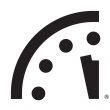 2018 • IT IS 2 MINUTES TO MIDNIGHT
2018 • IT IS 2 MINUTES TO MIDNIGHT
The failure of world leaders to address the largest threats to humanity’s future is lamentable—but that failure can be reversed. It is two minutes to midnight, but the Doomsday Clock has ticked away from midnight in the past, and during the next year, the world can again move it further from apocalypse. The warning the Science and Security Board now sends is clear, the danger obvious and imminent. The opportunity to reduce the danger is equally clear. The world has seen the threat posed by the misuse of information technology and witnessed the vulnerability of democracies to disinformation. But there is a flip side to the abuse of social media. Leaders react when citizens insist they do so, and citizens around the world can use the power of the Internet to improve the long-term prospects of their children and grandchildren. They can insist on facts, and discount nonsense. They can
demand action to reduce the existential threat of nuclear war and unchecked climate change. They can seize the opportunity to make a safer and saner world.
 2017 • IT IS TWO AND A HALF MINUTES TO MIDNIGHT
2017 • IT IS TWO AND A HALF MINUTES TO MIDNIGHT
For the last two years, the minute hand of the Doomsday Clock stayed set at three minutes before the hour, the closest it had been to midnight since the early 1980s. In its two most recent annual announcements on the Clock, the Science and Security Board warned: “The probability of global catastrophe is very high, and the actions needed to reduce the risks of disaster must be taken very soon.” In 2017, we find the danger to be even greater, the need for action more urgent. It is two and a half minutes to midnight, the Clock is ticking, global danger looms. Wise public officials should act immediately, guiding humanity away from the brink. If they do not, wise citizens must step forward and lead the way.
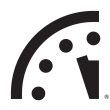 2016 • IT IS STILL 3 MINUTES TO MIDNIGHT
2016 • IT IS STILL 3 MINUTES TO MIDNIGHT
“Last year, the Science and Security Board moved the Doomsday Clock forward to three minutes to midnight, noting: ‘The probability of global catastrophe is very high, and the actions needed to reduce the risks of disaster must be taken very soon.’ That probability has not been reduced. The Clock ticks. Global danger looms. Wise leaders should act—immediately.”
 2015 • IT IS 3 MINUTES TO MIDNIGHT
2015 • IT IS 3 MINUTES TO MIDNIGHT
“Unchecked climate change, global nuclear weapons modernizations, and outsized nuclear weapons arsenals pose extraordinary and undeniable threats to the continued existence of humanity, and world leaders have failed to act with the speed or on the scale required to protect citizens from potential catastrophe. These failures of political leadership endanger every person on Earth.” Despite some modestly positive developments in the climate change arena, current efforts are entirely insufficient to prevent a catastrophic warming of Earth. Meanwhile, the United States and Russia have embarked on massive programs to modernize their nuclear triads—thereby undermining existing nuclear weapons treaties. “The clock ticks now at just three minutes to midnight because international leaders are failing to perform their most important duty— ensuring and preserving the health and vitality of human civilization.”
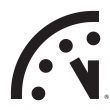 2012 • IT IS 5 MINUTES TO MIDNIGHT
2012 • IT IS 5 MINUTES TO MIDNIGHT
“The challenges to rid the world of nuclear weapons, harness nuclear power, and meet the nearly inexorable climate disruptions from global warming are complex and interconnected. In the face of such complex problems, it is difficult to see where the capacity lies to address these challenges.” Political processes seem wholly inadequate; the potential for nuclear weapons use in regional conflicts in the Middle East, Northeast Asia, and South Asia are alarming; safer nuclear reactor designs need to be developed and built, and more stringent oversight, training, and attention are needed to prevent future disasters; the pace of technological solutions to address climate change may not be adequate to meet the hardships that large-scale disruption of the climate portends.
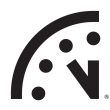 2010 • IT IS 6 MINUTES TO MIDNIGHT
2010 • IT IS 6 MINUTES TO MIDNIGHT
International cooperation rules the day. Talks between Washington and Moscow for a follow-on agreement to the Strategic Arms Reduction Treaty are nearly complete, and more negotiations for further reductions in the U.S. and Russian nuclear arsenal are already planned. Additionally, Barack Obama becomes the first U.S. president to publicly call for a nuclear-weapon-free world. The dangers posed by climate change are still great, but there are pockets of progress. Most notably: At Copenhagen, the developing and industrialized countries agree to take responsibility for carbon emissions and to limit global temperature rise to 2 degrees Celsius.
Timeline of Doomsday Clock changes (cont.)
 2007 • IT IS 5 MINUTES TO MIDNIGHT
2007 • IT IS 5 MINUTES TO MIDNIGHT
The world stands at the brink of a second nuclear age. The United States and Russia remain ready to stage a nuclear attack within minutes, North Korea conducts a nuclear test, and many in the international community worry that Iran plans to acquire the Bomb. Climate change also presents a dire challenge to humanity. Damage to ecosystems is already taking place; flooding, destructive storms, increased drought, and polar ice melt are causing loss of life and property.
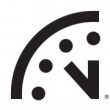 2002 • IT IS 7 MINUTES TO MIDNIGHT
2002 • IT IS 7 MINUTES TO MIDNIGHT
Concerns regarding a nuclear terrorist attack underscore the enormous amount of unsecured—and sometimes unaccounted for—weapon-grade nuclear materials located throughout the world. Meanwhile, the United States expresses a desire to design new nuclear weapons, with an emphasis on those able to destroy hardened and deeply buried targets. It also rejects a series of arms control treaties and announces it will withdraw from the Anti-Ballistic Missile Treaty.
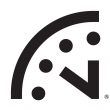 1998 • IT IS 9 MINUTES TO MIDNIGHT
1998 • IT IS 9 MINUTES TO MIDNIGHT
India and Pakistan stage nuclear weapons tests only three weeks apart. “The tests are a symptom of the failure of the international community to fully commit itself to control the spread of nuclear weapons— and to work toward substantial reductions in the numbers of these weapons,” a dismayed Bulletin reports. Russia and the United States continue to serve as poor examples to the rest of the world. Together, they still maintain 7,000 warheads ready to fire at each other within 15 minutes.
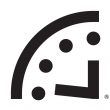 1995 • IT IS 14 MINUTES TO MIDNIGHT
1995 • IT IS 14 MINUTES TO MIDNIGHT
Hopes for a large post-Cold War peace dividend and a renouncing of nuclear weapons fade. Particularly in the United States, hard-liners seem reluctant to soften their rhetoric or actions, as they claim that a resurgent Russia could provide as much of a threat as the Soviet Union. Such talk slows the rollback in global nuclear forces; more than 40,000 nuclear weapons remain worldwide. There is also concern that terrorists could exploit poorly secured nuclear facilities in the former Soviet Union.
 1991 • IT IS 17 MINUTES TO MIDNIGHT
1991 • IT IS 17 MINUTES TO MIDNIGHT
With the Cold War officially over, the United States and Russia begin making deep cuts to their nuclear arsenals. The Strategic Arms Reduction Treaty greatly reduces the number of strategic nuclear weapons deployed by the two former adversaries. Better still, a series of unilateral initiatives remove most of the intercontinental ballistic missiles and bombers in both countries from hair-trigger alert. “The illusion that tens of thousands of nuclear weapons are a guarantor of national security has been stripped away,” the Bulletin declares.
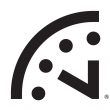 1990 • IT IS 10 MINUTES TO MIDNIGHT
1990 • IT IS 10 MINUTES TO MIDNIGHT
As one Eastern European country after another (Poland, Czechoslovakia, Hungary, Romania) frees itself from Soviet control, Soviet General Secretary Mikhail Gorbachev refuses to intervene, halting the ideological battle for Europe and significantly diminishing the risk of all-out nuclear war. In late 1989, the Berlin Wall falls, symbolically ending the Cold War. “Forty-four years after Winston Churchill’s ‘Iron Curtain’ speech, the myth of monolithic communism has been shattered for all to see,” the Bulletin proclaims.
 1988 • IT IS 6 MINUTES TO MIDNIGHT
1988 • IT IS 6 MINUTES TO MIDNIGHT
The United States and Soviet Union sign the historic Intermediate-Range Nuclear Forces Treaty, the first agreement to actually ban a whole category of nuclear weapons. The leadership shown by President Ronald Reagan and Soviet Premier Mikhail Gorbachev makes the treaty a reality, but public opposition to U.S. nuclear weapons in Western Europe inspires it. For years, such intermediate-range missiles had kept Western Europe in the crosshairs of the two superpowers.
 1984 • IT IS 3 MINUTES TO MIDNIGHT
1984 • IT IS 3 MINUTES TO MIDNIGHT
U.S.-Soviet relations reach their iciest point in decades. Dialogue between the two superpowers virtually stops. “Every channel of communications has been constricted or shut down; every form of contact has been attenuated or cut off. And arms control negotiations have been reduced to a species of propaganda,” a concerned Bulletin informs readers. The United States seems to flout the few arms control agreements in place by seeking an expansive, space-based anti-ballistic missile capability, raising worries that a new arms race will begin.
Timeline of Doomsday Clock changes (cont.)
 1981 • IT IS 4 MINUTES TO MIDNIGHT
1981 • IT IS 4 MINUTES TO MIDNIGHT
The Soviet invasion of Afghanistan hardens the U.S. nuclear posture. Before he leaves office, President Jimmy Carter pulls the United States from the Olympic Games in Moscow and considers ways in which the United States could win a nuclear war. The rhetoric only intensifies with the election of Ronald Reagan as president. Reagan scraps any talk of arms control and proposes that the best way to end the Cold War is for the United States to win
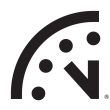 1980 • IT IS 7 MINUTES TO MIDNIGHT
1980 • IT IS 7 MINUTES TO MIDNIGHT
Thirty-five years after the start of the nuclear age and after some promising disarmament gains, the United States and the Soviet Union still view nuclear weapons as an integral component of their national security. This stalled progress discourages the Bulletin: “[The Soviet Union and United States have] been behaving like what may best be described as ‘nucleoholics’—drunks who continue to insist that the drink being consumed is positively ‘the last one,’ but who can always find a good excuse for ‘just one more round.’”
 1974 • IT IS 9 MINUTES TO MIDNIGHT
1974 • IT IS 9 MINUTES TO MIDNIGHT
South Asia gets the Bomb, as India tests its first nuclear device. And any gains in previous arms control agreements seem like a mirage. The United States and Soviet Union appear to be modernizing their nuclear forces, not reducing them. Thanks to the deployment of multiple independently targetable reentry vehicles (MIRV), both countries can now load their intercontinental ballistic missiles with more nuclear warheads than before.
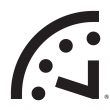 1972 • IT IS 12 MINUTES TO MIDNIGHT
1972 • IT IS 12 MINUTES TO MIDNIGHT
The United States and Soviet Union attempt to curb the race for nuclear superiority by signing the Strategic Arms Limitation Treaty (SALT) and the Anti-Ballistic Missile (ABM) Treaty. The two treaties force a nuclear parity of sorts. SALT limits the number of ballistic missile launchers either country can possess, and the ABM Treaty stops an arms race in defensive weaponry from developing.
 1969 • IT IS 10 MINUTES TO MIDNIGHT
1969 • IT IS 10 MINUTES TO MIDNIGHT
Nearly all of the world’s nations come together to sign the Nuclear Non-Proliferation Treaty. The deal is simple—the nuclear weapon states vow to help the treaty’s non-nuclear weapon signatories develop nuclear power if they promise to forego producing nuclear weapons. The nuclear weapon states also pledge to abolish their own arsenals when political conditions allow for it. Although Israel, India, and Pakistan refuse to sign the treaty, the Bulletin is cautiously optimistic: “The great powers have made the first step. They must proceed without delay to the next one—the dismantling, gradually, of their own oversized military establishments.”
 1968 • IT IS 7 MINUTES TO MIDNIGHT
1968 • IT IS 7 MINUTES TO MIDNIGHT
Regional wars rage. U.S. involvement in Vietnam intensifies, India and Pakistan battle in 1965, and Israel and its Arab neighbors renew hostilities in 1967. Worse yet, France and China develop nuclear weapons to assert themselves as global players. “There is little reason to feel sanguine about the future of our society on the world scale,” the Bulletin laments. “There is a mass revulsion against war, yes; but no sign of conscious intellectual leadership in a rebellion against the deadly heritage of international anarchy.”
Timeline of Doomsday Clock changes (cont.)
 1963 • IT IS 12 MINUTES TO MIDNIGHT
1963 • IT IS 12 MINUTES TO MIDNIGHT
After a decade of almost non-stop nuclear tests, the United States and Soviet Union sign the Partial Test Ban Treaty, which ends all atmospheric nuclear testing. While it does not outlaw underground testing, the treaty represents progress in at least slowing the arms race. It also signals awareness among the Soviets and United States that they need to work together to prevent nuclear annihilation.
 1960 • IT IS 7 MINUTES TO MIDNIGHT
1960 • IT IS 7 MINUTES TO MIDNIGHT
Political actions belie the tough talk of “massive retaliation.” For the first time, the United States and Soviet Union appear eager to avoid direct confrontation in regional conflicts such as the 1956 Egyptian-Israeli dispute. Joint projects that build trust and constructive dialogue between third parties also quell diplomatic hostilities. Scientists initiate many of these measures, helping establish the International Geophysical Year, a series of coordinated, worldwide scientific observations, and the Pugwash Conferences, which allow Soviet and American scientists to interact.
 1953 • IT IS 2 MINUTES TO MIDNIGHT
1953 • IT IS 2 MINUTES TO MIDNIGHT
After much debate, the United States decides to pursue the hydrogen bomb, a weapon far more powerful than any atomic bomb. In October 1952, the United States tests its first thermonuclear device, obliterating a Pacific Ocean islet in the process; nine months later, the Soviets test an H-bomb of their own. “The hands of the Clock of Doom have moved again,” the Bulletin announces. “Only a few more swings of the pendulum, and, from Moscow to Chicago, atomic explosions will strike midnight for Western civilization.”
 1949 • IT IS 3 MINUTES TO MIDNIGHT
1949 • IT IS 3 MINUTES TO MIDNIGHT
The Soviet Union denies it, but in the fall, President Harry Truman tells the American public that the Soviets tested their first nuclear device, officially starting the arms race. “We do not advise Americans that doomsday is near and that they can expect atomic bombs to start falling on their heads a month or year from now,” the Bulletin explains. “But we think they have reason to be deeply alarmed and to be prepared for grave decisions.”
 1947 • IT IS 7 MINUTES TO MIDNIGHT
1947 • IT IS 7 MINUTES TO MIDNIGHT
As the Bulletin evolves from a newsletter into a magazine, the Clock appears on the cover for the first time. It symbolizes the urgency of the nuclear dangers that the magazine’s founders—and the broader scientific community—are trying to convey to the public and political leaders around the world.
